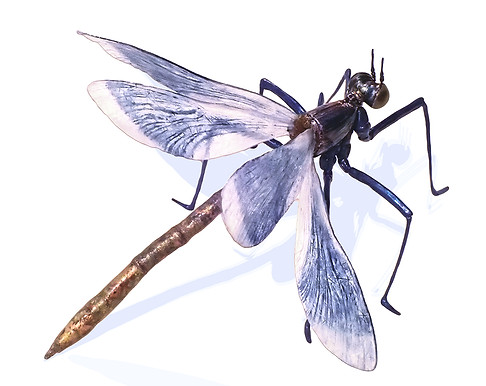ARThropods
 |  |  |  |  |  |
|---|---|---|---|---|---|
 |
The sculpture of the beautiful demoiselle (Calopteryx virgo) possesses elegant wings. I mimicked veneer patterns by carving them on epoxy. The effect that the faceted eyes of a dragonfly are continually observing you was achieved by facet-cut topazes covered by epoxy resin.


(Phymateus saxosus)


The design of the wing imposes considerable constraints, as a thinner and more fragile wing is more prone to deformation under weight. The Rainbow Milkweed Locust was the first sculpture where I applied my "venation techniques," effectively mimicking the insect's wings and enhancing the overall structure.




The charism of the Lantern Bug inspired me for this sculpture. This sculpture's uniqueness is that the wing venation pattern is identical to the real one. And most importantly, this venation has both an aesthetic and a functional design aspect.


This sculpture draws inspiration from the Devil's Flower Mantis, the largest species known for its flower-like mimicry. Rather than being a replica, it focuses on a motif, showcasing a whimsical design with openwork wings that emulate vein patterns, complemented by an elegant, slender body.





This sculpture mimics the Indian flower mantis, whose specific coloration and behavior imitate the flora surrounding their habitat. My trademark wing reinforcement technique allows me to replicate openwork wings, including vein patterns.




